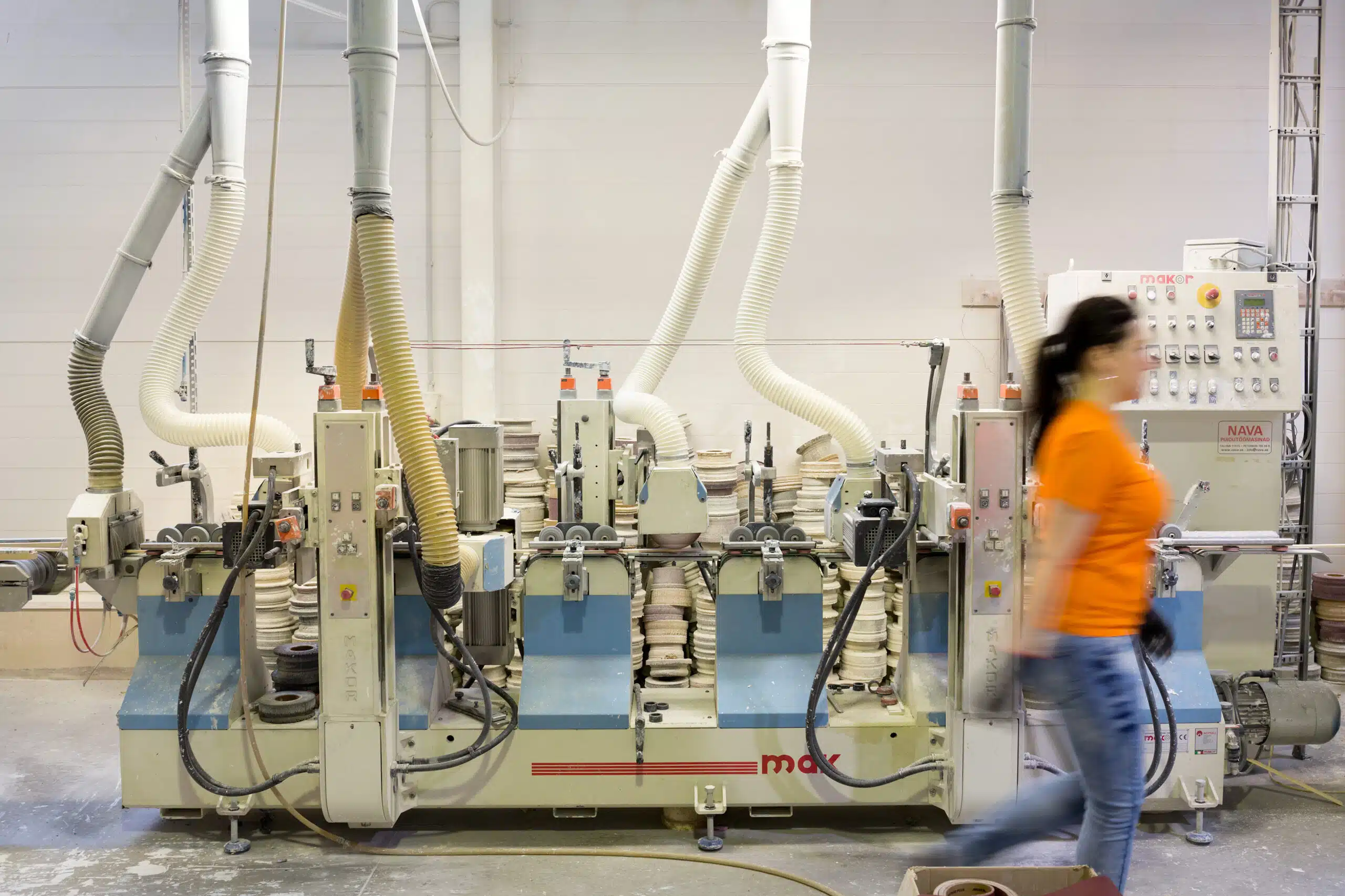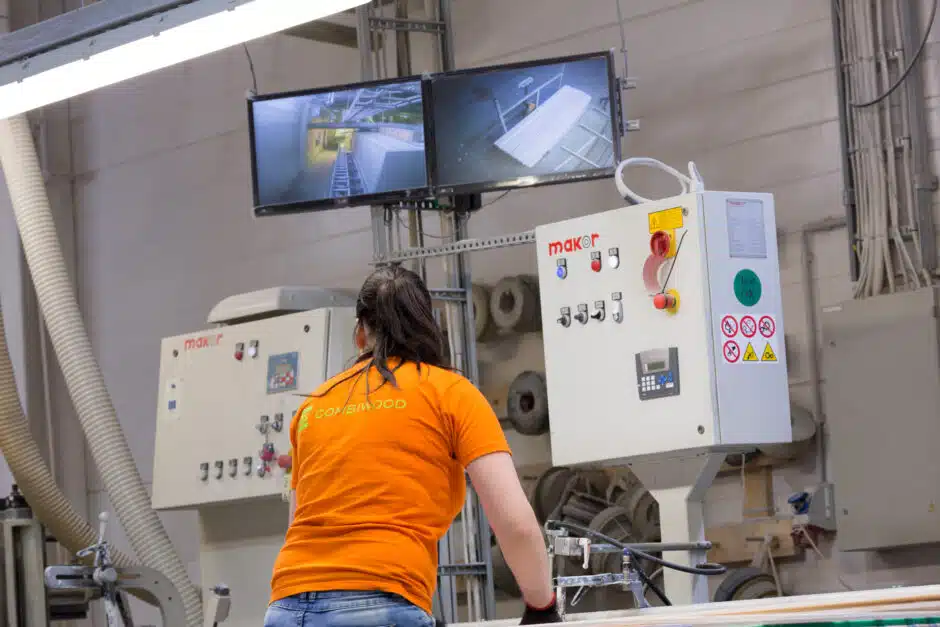We started Combiwood from scratch. We didn’t have the equipment or any place to put it. The first step was acquiring everything. In fact, we didn’t even know what the right equipment was for us. With the best knowledge we had at the time, we bought our first painting line and our business got going.
Our capabilities grew and we were soon looking for the next line to expand our production capacity. We visited Ligna, a major woodworking trade fair in Germany, several times where an Italian company called Makor caught our eye. Gabriele, their salesman, knew us by sight and knew that at that moment we had a line made by his competitors. He made friendly fun of us because we were always browsing but never buying. Makor’s prices were reasonable and the equipment of high quality, so we ended up buying our next line from them. So began a long and fruitful cooperation.
Makor specialises in longitudinal painting and their machines are therefore well suited to making our strips of moulding. Just as important as the machines themselves is the cooperation with the people at Makor. They understand our needs and go along with our ideas. Over the years we have developed a close working relationship. The people at Makor have helped us to get superlative productivity out of our machines, and we are thereby helping them to develop their product. We’ve given them a lot of advice on what could be further improved. They listen to us because the folks at Makor know that we have smart craftsmen in Estonia. Often, the improvements we ask for in our machines are standard solutions in the next generation of machinery.
This is what sets Makor apart from other equipment manufacturers. Many others are inflexible and not interested in changing their equipment for one customer. Makor, on the other hand, often picks up our ideas and adapts machines to our needs. When we bought the first Makor painting line, it had a painting speed of 60 metres per minute. This is a very good figure in itself for painting. Over time, however, with successive upgrades, we were able to get 160 m/min out of this line. Even the folks at Makor did not believe that it was possible for their lines to paint so quickly. It’s all in the tiny details and requires a lot of fine adjustments. However, the effort put in is rewarded with more than doubled productivity with the same equipment.
Since we immediately got on well with Makor, we have bought all our following lines from them. This is also convenient in the sense that spareparts are interchangable, and communication is with the same people who already know you and your equipment. Everything is much easier.
Once we squeezed 160 m/min out of the Makor painting line, interesting things started happening. The machine manufacturer needs a reference, an example of a line where everything is perfectly tuned. We agreed to demo the machinery to people interested in buying Makor products. We’ve had visitors from China, Canada, and elsewhere. People come from so far away to little Estonia to see how Makor’s lines should be run.
Reaching this ideal productivity is a long process. Getting a painting line to work well is a big and complex three-way collaboration. In order to get good results at high speed, there must be smart craftsmen at the plant, and the line and paint producers must be willing to work together. The line manufacturer’s representatives will set up the initial motions and our experts can start tuning from there. The infeed, longitudinal movement, sanding and all the transitions between the different stages need to be in place.
The drying time of the paint is also very important and therefore the paint producer must also be involved in the process. If you increase the speed, you need to make sure that the paint has enough time to dry. The chemistry, solvent mixtures, and drying times, as well as the air supply, must be exactly right. There are many nuances, and the cost of getting it wrong is bubbles or cracks in the paint and a ruined product. The paint manufacturer can play around with the formulations and each paint mix has to be matched to each line and its ovens and operating speeds. We consider it a very good result if all this can be done within six months.
This kind of cooperation between the machine manufacturer and the customer is necessary for both sides, because many problems only come up in the course of continued use of the line. After all, the manufacturer does not operate their machines to the point of wear on a daily basis. Makor has received a lot of this kind of input from us, and it is a win-win situation for everyone, including their next customers.
The core of our cooperation is that Makor listens to us, tries to understand our problems and reacts to them. The attitude of the machine manufacturer is very much the key to both our success and Makor’s own. If you know who the best people are, you will always go to them, because trying something new is a risk. It’s through collaboration that we’ve reached the speeds we’re working at today. The people at Makor are great partners.

